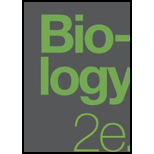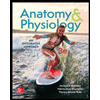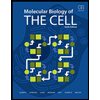Suppose that you have isolated the enzyme sucrase (able to hydrolyze sucrose into glucose and fructose), and you wish to determine the nature of inhibitor B for this enzyme. You have prepared five different concentrations of substrate (sucrose), and five different concentrations of inhibitor B (plus the control, with zero mM of inhibitor B). The following Table lists the inhibitor B concentrations [I], substrate concentrations [S], and resulting enzyme velocities (Vo) for all six of these experiments: [I] [S] Vo 1/[S] 1/ Vo 0 mM 0.1 mM 0.333333333333 mM per minute 0 mM 0.2 mM 0.50 0 mM 0.3 mM 0.60 0 mM 0.4 mM 0.666666666667 0 mM 0.5 mM 0.714285714286 0.1 mM 0.1 mM 0.25 0.1 mM 0.2 mM 0.333333333333 0.1 mM 0.3 mM 0.375 0.1 mM 0.4 mM 0.40 0.1 mM 0.5 mM 0.416666666667 0.20 mM 0.1 mM 0.20 0.20 mM 0.2 mM 0.25 0.20 mM 0.3 mM 0.272727272727 0.20 mM 0.4 mM 0.285714285714 0.20 mM 0.5 mM 0.294117647059 0.3 mM 0.1 mM 0.166666666667 0.3 mM 0.2 mM 0.20 0.3 mM 0.3 mM 0.214285714286 0.3 mM 0.4 mM 0.222222222222 0.3 mM 0.5 mM 0.227272727273 0.40 mM 0.1 mM 0.142857142857 0.40 mM 0.2 mM 0.166666666667 0.40 mM 0.3 mM 0.176470588235 0.40 mM 0.4 mM 0.181818181818 0.40 mM 0.5 mM 0.185185185185 0.5 mM 0.1 mM 0.125 0.5 mM 0.2 mM 0.142857142857 0.5 mM 0.3 mM 0.150 0.5 mM 0.4 mM 0.153846153846 0.5 mM 0.5 mM 0.15625 Construct a Michaelis-Menten plot, and a Lineweaver-Burk plot, for all six of these experiments on the same graph (for each plot). Calculate the Vmax, the Km, and the slope (Km/Vmax) for the control (with [I] = 0 mM) and for each non-zero concentration of inhibitor B ([I] = 0.1, 0.2, 0.3, 0.4, and 0.5 mM). Which type of reversible enzyme inhibition is illustrated by inhibitor B?
Enzyme kinetics
In biochemistry, enzymes are proteins that act as biological catalysts. Catalysis is the addition of a catalyst to a chemical reaction to speed up the pace of the reaction. Catalysis can be categorized as either homogeneous or heterogeneous, depending on whether the catalysts are distributed in the same phase as that of the reactants. Enzymes are an essential part of the cell because, without them, many organic processes would slow down and thus will affect the processes that are important for cell survival and sustenance.
Regulation of Enzymes
A substance that acts as a catalyst to regulate the reaction rate in the living organism's metabolic pathways without itself getting altered is an enzyme. Most of the biological reactions and metabolic pathways in the living systems are carried out by enzymes. They are specific for their works and work in particular conditions. It maintains the best possible rate of reaction in the most stable state. The enzymes have distinct properties as they can proceed with the reaction in any direction, their particular binding sites, pH specificity, temperature specificity required in very few amounts.
Suppose that you have isolated the enzyme sucrase (able to hydrolyze sucrose into glucose and fructose), and you wish to determine the nature of inhibitor B for this enzyme. You have prepared five different concentrations of substrate (sucrose), and five different concentrations of inhibitor B (plus the control, with zero mM of inhibitor B). The following Table lists the inhibitor B concentrations [I], substrate concentrations [S], and resulting enzyme velocities (Vo) for all six of these experiments:
|
[I] |
[S] |
Vo |
1/[S] |
1/ Vo |
|
0 mM |
0.1 mM |
0.333333333333 mM per minute |
|
|
|
0 mM |
0.2 mM |
0.50 |
|
|
|
0 mM |
0.3 mM |
0.60 |
|
|
|
0 mM |
0.4 mM |
0.666666666667 |
|
|
|
0 mM |
0.5 mM |
0.714285714286 |
|
|
|
0.1 mM |
0.1 mM |
0.25 |
|
|
|
0.1 mM |
0.2 mM |
0.333333333333 |
|
|
|
0.1 mM |
0.3 mM |
0.375 |
|
|
|
0.1 mM |
0.4 mM |
0.40 |
|
|
|
0.1 mM |
0.5 mM |
0.416666666667 |
|
|
|
0.20 mM |
0.1 mM |
0.20 |
|
|
|
0.20 mM |
0.2 mM |
0.25 |
|
|
|
0.20 mM |
0.3 mM |
0.272727272727 |
|
|
|
0.20 mM |
0.4 mM |
0.285714285714 |
|
|
|
0.20 mM |
0.5 mM |
0.294117647059 |
|
|
|
0.3 mM |
0.1 mM |
0.166666666667 |
|
|
|
0.3 mM |
0.2 mM |
0.20 |
|
|
|
0.3 mM |
0.3 mM |
0.214285714286 |
|
|
|
0.3 mM |
0.4 mM |
0.222222222222 |
|
|
|
0.3 mM |
0.5 mM |
0.227272727273 |
|
|
|
0.40 mM |
0.1 mM |
0.142857142857 |
|
|
|
0.40 mM |
0.2 mM |
0.166666666667 |
|
|
|
0.40 mM |
0.3 mM |
0.176470588235 |
|
|
|
0.40 mM |
0.4 mM |
0.181818181818 |
|
|
|
0.40 mM |
0.5 mM |
0.185185185185 |
|
|
|
0.5 mM |
0.1 mM |
0.125 |
|
|
|
0.5 mM |
0.2 mM |
0.142857142857 |
|
|
|
0.5 mM |
0.3 mM |
0.150 |
|
|
|
0.5 mM |
0.4 mM |
0.153846153846 |
|
|
|
0.5 mM |
0.5 mM |
0.15625 |
|
|
Construct a Michaelis-Menten plot, and a Lineweaver-Burk plot, for all six of these experiments on the same graph (for each plot). Calculate the Vmax, the Km, and the slope (Km/Vmax) for the control (with [I] = 0 mM) and for each non-zero concentration of inhibitor B ([I] = 0.1, 0.2, 0.3, 0.4, and 0.5 mM). Which type of reversible enzyme inhibition is illustrated by inhibitor B?
Trending now
This is a popular solution!
Step by step
Solved in 4 steps with 8 images









